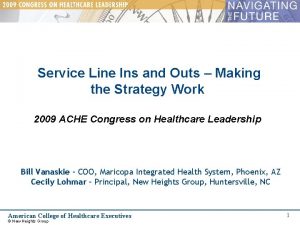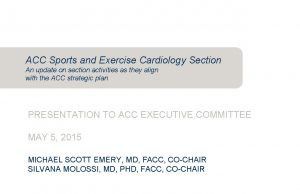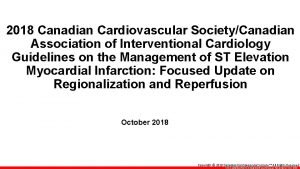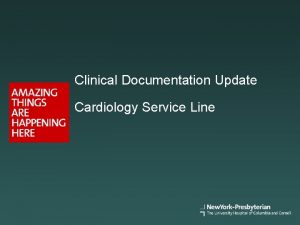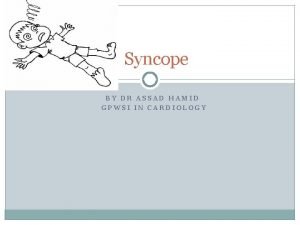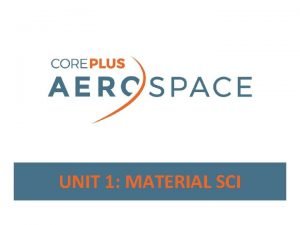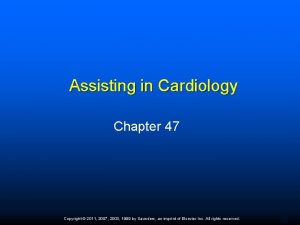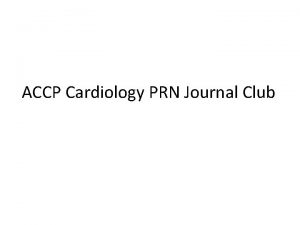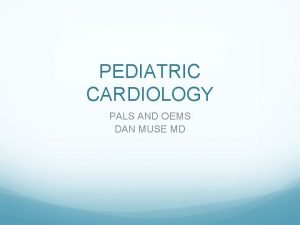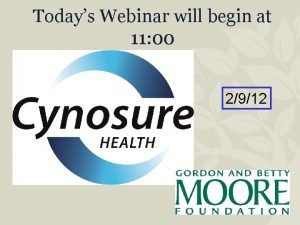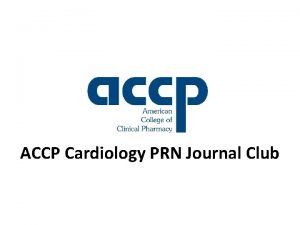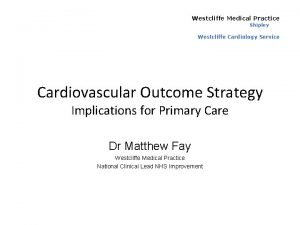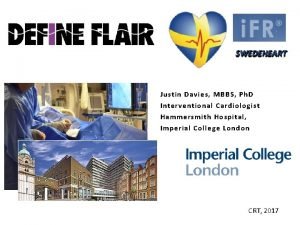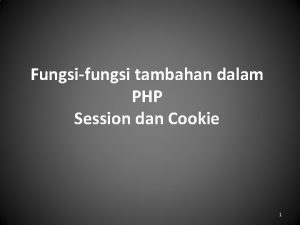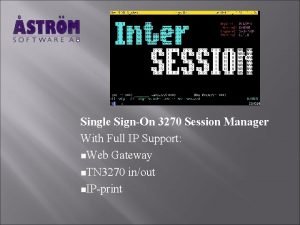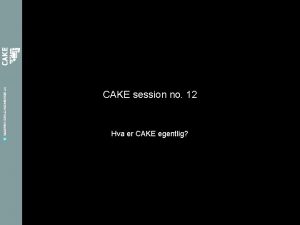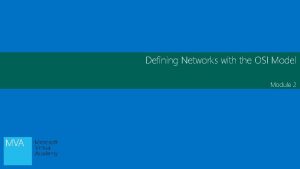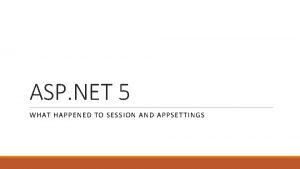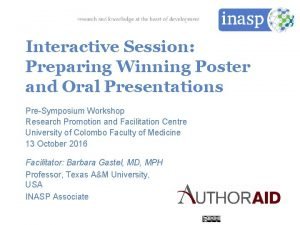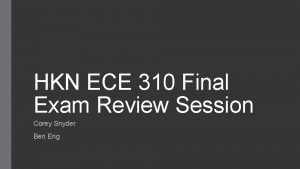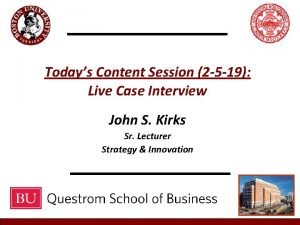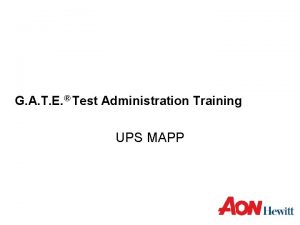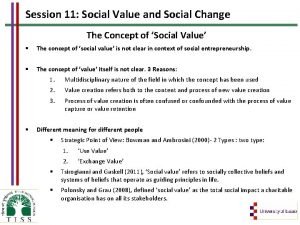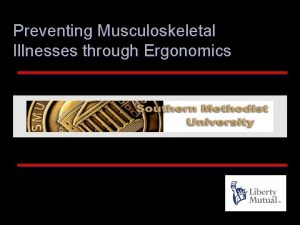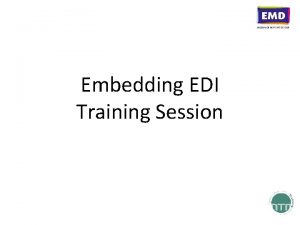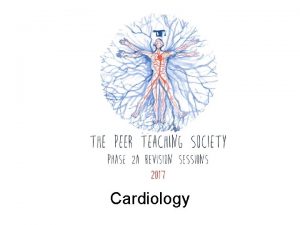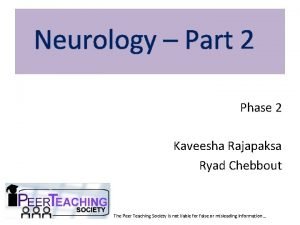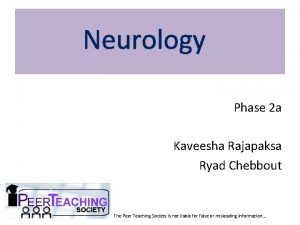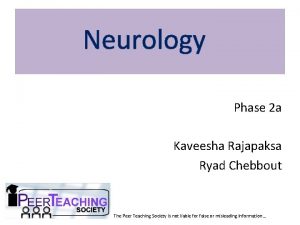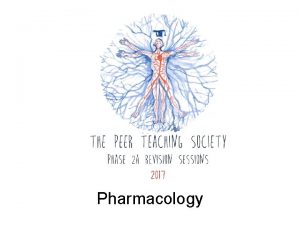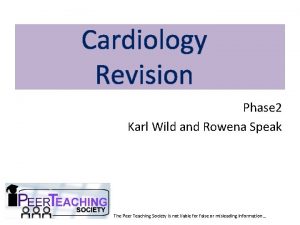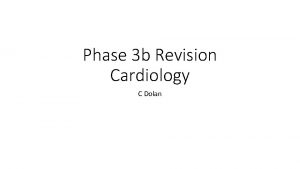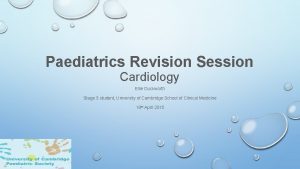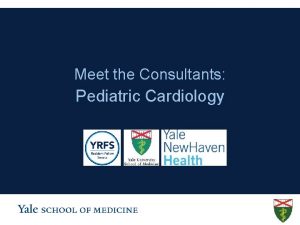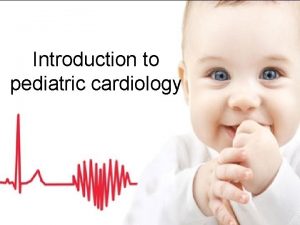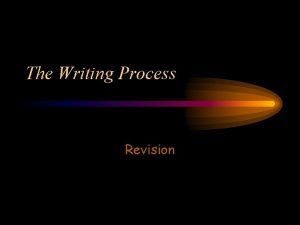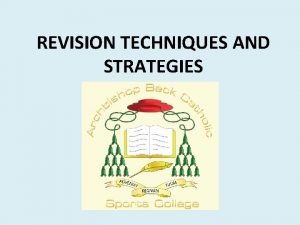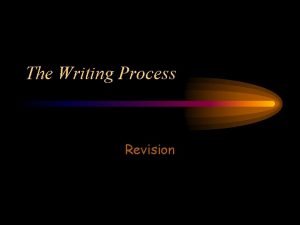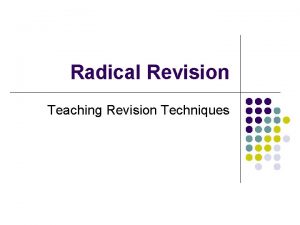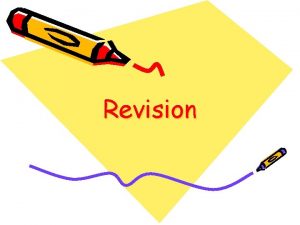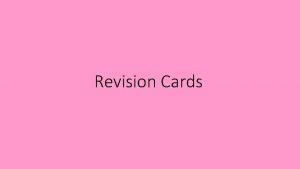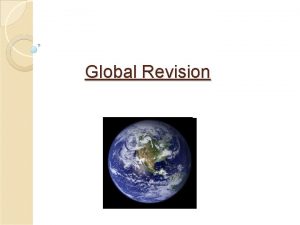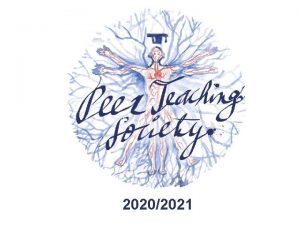Cardiology Cardiology Phase 2 a Revision Session Ryad







































- Slides: 39

Cardiology

Cardiology Phase 2 a Revision Session Ryad Chebbout Abdullah Aamir 10/03/17 The Peer Teaching Society is not liable for false or misleading information…

Content • Hypertension • Heart Failure • Congenital Heart • Shock Disease • Limb Claudication / • Valvular Disease Ischaemia • Dysrhythmias • Ischaemic Heart Disease • Pericarditis

Cardiac Presentation Symptoms • Chest Pain • Shortness of Breath • Palpitations • Syncope • Cough Signs • Murmur • JVP • Peripheral oedema • Pulse changes • Lung base changes • Tachycardia, Bradycardia • Hypotension, Hypertension

Hypertension

Hypertension • Modifiable CVD risk factor (e. g. IHD, ACS, CVE, PVD) • 95% = Essential HTN (unknown aetiology) • Exclude secondary causes (5%) • Check for end-organ damage (renal, endocrine, CVD, drugs) • Pharmacological management alongside managing other modifiable CVD risk factors (e. g. hyperlipidaemia, DM etc…)


Hypertensive Emergencies Crisis = >200/>120 • Emergency: High BP + Acute End-Organ Damage • Urgency: High BP (no end-organ damage) Symptoms of acute end-organ damage: • Neuro: headache, N+V, confusion, retinopathy, papilloedema, weakness • CVD: chest pain, SOB • Renal: oliguria/anuria Slowly reduce BP!!!

Congenital Heart Disease

Foetal Circulation

Congenital Heart Disease R->L Shunts (4 T’s) - Truncus Arteriosus - Transposition of Great Vessels - Tricuspid Atresia - Tetralogy of Fallot Early Cyanosis (blue babies) Urgent Surgical Correction/Maintenance of PDA

Congenital Heart Disease (2) L->R Shunts - VSD - ASD - PDA Eisenmenger Syndrome (VSD/ASD/PDA) L->R Shunt = Increased Pulmonary Pressure = PAH = RVH = R->L Shunt Late Cyanosis (blue kids) Surgery

Valvular Heart Disease



Mitral Regurgitation PATH • MR = LA Dilatation = P. Venous HTN = P. HTN • MR = LV Dilatation = LV Hypertrophy = LVF (vol. overload) AE • IHD (Post-MI) • Annular Calcification (degenerative) • RF/IE SYM • SOB • Fatigue SIG • Murmur • Displaced Hyperdynamic Apex • AF INV • ECG (AF, P-mitrale, LVH) • CXR • Echo Mx • None • Surgery

Aortic Stenosis AE • LV Hypertrophy = LVF (pressure overload) CVD RF’s AE • Calcification (degenerative) • Congenital (bicuspid) • RF SYM • Syncope • Angina • SOB SIG • Murmur • Pulsus Tardus et Parvus (slowrising) INV • ECG (P-mitrale, LVH, LAD) • CXR • Echo Mx • None • Surgery

Rheumatic Fever

Infective Endocarditis

Dysrhythmias



Normal Adult ECG

Bradycardia P Waves Each Followed by QRS (SAN dysfunction) Not Each Followed by QRS (AVN dysfunction) • Sinus bradycardia • 2 nd Heart block • Sick sinus syndrome • 3 rd Heart block (1 st Heart block)

Sinus Bradycardia

AVN/Heart Block 1 st Degree • Benign and asymptomatic. No treatment required. AE • Increased vagal tone (athletes) • Inferior MI • Mitral valve surgery • AVN blocking drugs (betablockers, CCB, digoxin) 2 nd Degree (Mobitz type 1) • Progressive lengthening of PR interval until beat is “dropped” (excitation completely feels to pass through AVN/bundle of His) AE • AVN blocking drugs (betablockers, CCB, digoxin) • Increased vagal tone • Inferior MI

AVN/Heart Block 2 nd Degree (Mobits type 2) • PR interval is constant and QRS complex dropped • Failure of conduction through His-Purkinje system • ASSOC: LBBB, bifascicular block • May be symptomatic (syncope) 3 rd Degree / Complete Heart Block • Complete absence of AV conduction • Rhythm is maintained by junctional or ventricular escape rhythm • May be ventricular standstill = syncope / sudden cardiac death AE • Anterior MI • Mitral valve surgery • SLE, RF, Lyme AE • Inferior MI • AVN blocking drugs (CCB, beta-blockers, digoxin)

1 st Degree Heart Block

2 nd Degree Heart Block (Mobitz type I)

2 nd Degree Heart Block (Mobitz type II)

3 rd Degree (Complete) Heart Block


Tachycardia – Narrow Complex (SVT) Regular Irregular Atrial • Sinus tachycardia • Atrial flutter • Atrial fibrillation • Atrial flutter with variable block • Multifocal atrial tachycardia Atrioventricular • AV re-entry tachycardia (AVRT) • AV nodal re-entry tachycardia (AVNRT) • Automatic junctional tachycardia

Sinus Tachycardia

Atrial Flutter PATH • A type of SVT caused by a re-entrant circuit within the right atrium AE • Idiopathic, IHD, atrial dilatation (septal defect, PE, mitral/tricuspid disease) ECG • Regular atrial rate of ~300 bpm (200 -400 bpm, depends on size of right atrium) • Ventricular rate determined by the AV conduction ratio: 2: 1 (commonest), 3: 1, 4: 1, variable rate • ‘Sawtooth’ pattern, best seen in II/III/VF, narrow complex QRS


AVNRT/AVRT

Atrial Fibrillation PATH • AVN bombarded with depolarisation waves of varying strength, and only conducts in ‘all or non fashion’ • Initiating event (e. g. PAC) + Substrate for maintenance (e. g. dilated left atrium) • First Episode, Recurrent (>2 episodes), Paroxysmal (self-terminates <7 d), Persistent (>7 d), Permanent (>1 yr) AE • • • IHD HTN PE Hyperthyroidism Mitral Valve Disease PRES • Asymptomatic • Chest Pain, Palpitations, SOB Mx • (acute) Cardioversion (electrical / amiodarone) • • (Chronic) Rate Control: Beta-Blocker / CCB / Digoxin (HF) Rhythm Control: Cardioversion (electrical / amiodarone) Anticoagulation: Warfarin (post. TIA/Stroke) COMP • CVE

Atrial Fibrillation
 Passive sentence
Passive sentence Which detector used in hplc
Which detector used in hplc Stationary phase in gas chromatography
Stationary phase in gas chromatography In a triangle connected source feeding a y connected load
In a triangle connected source feeding a y connected load Normal phase vs reverse phase chromatography
Normal phase vs reverse phase chromatography Normal phase vs reverse phase chromatography
Normal phase vs reverse phase chromatography Csce 441
Csce 441 Tswett pronunciation
Tswett pronunciation Line current and phase current
Line current and phase current Mobile phase and stationary phase
Mobile phase and stationary phase Cardiology service line management
Cardiology service line management Acc sports cardiology
Acc sports cardiology Craig ainsworth cardiology
Craig ainsworth cardiology Clinical documentation improvement for cardiology
Clinical documentation improvement for cardiology Cardiology structured reporting
Cardiology structured reporting Gpwsi cardiology
Gpwsi cardiology Hall-garcia cardiology associates
Hall-garcia cardiology associates Cardiology procedures chapter 47
Cardiology procedures chapter 47 Accp cardiology prn journal club
Accp cardiology prn journal club Muse cardiology
Muse cardiology Enloe cardiology
Enloe cardiology Accp cardiology prn
Accp cardiology prn Qs complex
Qs complex Westcliffe cardiology service
Westcliffe cardiology service Justin davies md
Justin davies md Perbedaan session dan cookies
Perbedaan session dan cookies Mainframe session manager
Mainframe session manager Cake session
Cake session Session protocol data unit
Session protocol data unit .net 5 session
.net 5 session Poster imrad
Poster imrad Cog weel
Cog weel Year up info session
Year up info session Hkn review
Hkn review M&a bo session
M&a bo session Gate-india.aon/candidate/session/sign in
Gate-india.aon/candidate/session/sign in Social value session
Social value session Ergonomics session
Ergonomics session Coaching session agenda
Coaching session agenda Edi session
Edi session










